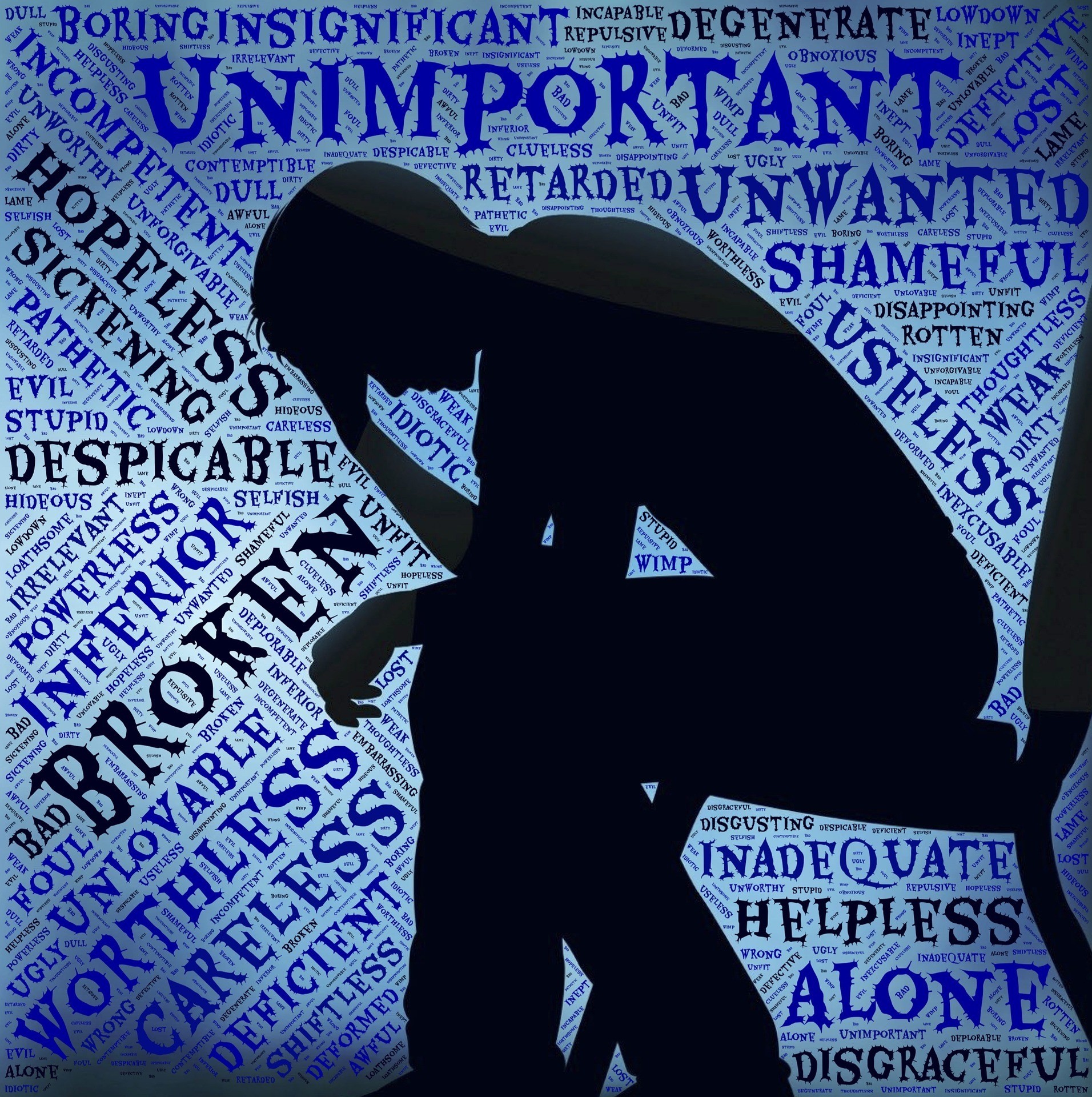How To Prevent Suicide And Help Someone At Risk With EFT Tapping?

TRIGGER WARNING: SUICIDE
Some narrations in this post may be triggering to certain individuals. If you feel your mental health could be triggered or affected by reading stories about suicide-related topics, we advise you to read no further. As a precaution, please do not read with no one around. If you are triggered, please seek professional care immediately.
Suicide. A letter, a note, a poem. That silhouette of a youth hanging from a fan, on the ledge of a bridge, or in a bathtub with cut wrists. The epidemic that many fear, but few want to discuss.
Suicide awareness isn’t a fun topic to chat about at brunch with the girls, or to bring up at a family get-together.
Nevertheless, it’s an important crisis that is only made worse because of the lack of awareness surrounding it, and because mental health stigma prevents many people from reaching out and asking for help.

"The World Health Organization estimates that one million people die from successful suicide attempts per year, which amounts to one death every 40 seconds." (1)
Suicide is now among the 3 leading causes of death for those aged 15 to 44. This is a testimony to the fact that this is a large-scale problem and not a background social issue.
Suicide deaths are frequently accompanied by unanswered questions. Those left behind may feel a combination of grief, guilt, anger, and confusion. People experiencing suicidal thoughts often struggle to feel heard. Suicide myths abound, such as the notion that talking to a suicidal person will make them suicidal.
Suicide is a tragedy that can be avoided. Knowing what to say and do when someone is having suicidal thoughts can help save lives. The way we talk about suicide matters, and the consequences of these discussions go far beyond chats with family and friends.
According to research, the way journalists write about suicide, may contribute to an increase in the suicide rate. Without sensationalizing mortality, a constructive way to reporting on and talking about suicide raises awareness and cultivates empathy. (2)
My view is “What if they needn’t reach that stage? What if they were able to speak to a qualified practitioner to help clear their thoughts? Just imagine how much safer it would be to never allow such thoughts to enter their consciousness in the first place.”

There is no single reason why someone might contemplate suicide. Suicide does not discriminate by age, gender, wealth, race, religious preference or sexuality. Someone thinking about suicide may be experiencing symptoms of a mental illness, or a variety of life stressors. It could be loss of a loved one, financial strain, relationship issues, losing a job, changes in health, or another significant life change.
Suicidal thoughts are frequently the outcome of a feeling of helplessness when confronted with an overwhelming life scenario. If you don't believe in the future, you can incorrectly believe that suicide is a viable option. You may have tunnel vision, believing that the only way out is to commit suicide in the midst of a crisis. Suicide may also have a hereditary component. People with a family history of suicide are more likely to commit suicide or have suicidal thoughts or actions.
Just as starvation leads to death because we do not have adequate nutrients in our body, suicide may be caused by insufficient emotional “nutrients” in our lives – companionship, love, respect, and other vital emotional requirements. It may be said that the person is “starved” of these essential components of a healthy social life. This manifests as the trigger for suicide– grief, loss, depression, helplessness, and being overwhelmed.
You may be at risk of suicide if you:
- Attempted suicide before
- Feel hopeless, worthless, agitated, socially isolated or lonely
- Experience a stressful life event, such as the death of a loved one, military duty, a breakup, or financial or legal difficulties
- Have a substance abuse problem — alcohol and drug abuse can intensify suicidal thoughts and make you feel irresponsible or impulsive enough to act on them
- Have an underlying psychiatric disorder, such as major depression, post-traumatic stress disorder or bipolar disorder
- Have a family history of mental disorders, substance abuse, suicide, or violence, including physical or sexual abuse
- Are lesbian, gay, bisexual or transgender with an unsupportive family or in a hostile environment
- Being the victim of bullying
- Reading or hearing an account of suicide or knowing a peer who died by suicide (3)
Working mother Donita Packard recently attended a heart-rending funeral. Upon suspecting her husband of infidelity, a dear friend of hers committed suicide. According to the OECD, 55% of suicides are committed due to external factors of this sort. The remaining 45%, it says, are caused by chemical imbalances in the brain. That is, the person is inherently susceptible to being depressed, anxious, and suicidal – it is in their genes and has manifested in their brain.
WARNING SIGNS
The following are some of the most common warning signals that someone is feeling suicidal:
- Changes in mood
- Giving away prized possessions
- Putting final affairs in order
- Withdrawing
- Changes in physical appearance
- Prior suicide attempts
- Alcohol or drug use
- High-risk behaviors
- Making statements with themes of hopelessness, helplessness, and fear of becoming a burden
- Making verbal suicide threats, such as “I want to die” or “I’m going to kill myself”
- Any other significant changes
Trust your instincts. If you’re concerned that something feels different or wrong, it probably is. (4)
Stigma and Taboo
Because of the stigma associated with mental diseases and suicide, many people having suicidal thoughts or who have attempted suicide do not seek treatment, and hence do not receive the help they require. Due to a lack of knowledge of suicide as a serious public health concern and the stigma in many communities to publicly discuss it, suicide prevention has not been fully addressed. Only 38 nations report having a national suicide prevention strategy, and only a few countries have placed suicide prevention among their health objectives.
Raising community awareness and breaking down the taboo is important for countries to make progress in preventing suicide.
What Do We Make of This?
What we find upon looking at the leading causes of suicide is that whether the person’s external environment or brain dysfunctions caused their suicidal tendencies, suicide is not the victim’s fault.
In her TEDx talk titled Casually Suicidal, Sarah Liberti describes how her best friend once said to her, “You’ve always known what I've thought about people who want to kill themselves: Let them. They’re weak. And we’re better off without them.” Sadly, this reaction is not uncommon. Often when seeking out for help, suicidal individuals hear statements such as “it’s all in your mind”, get over it”, or worst of all “suicide is sin”.
It has become normalized to treat suicide as voluntary action instead of a cry of desperation.
We see suicidal individuals as feeble instead of as those with just an inability to communicate the pain we all feel a certain degree.
It is time we stopped looking at suicide as a crime. It is time we looked at suicidal tendencies as the manifestation of deep emotional disturbances – an evil, of which the affected is not the culprit but the victim.
Prevention is better than cure. It is not until we acknowledge a problem that we can prevent it.

WHAT CAN YOU DO TO HELP
Referring to her friend, Donita Packard shares, “I can identify with her pain because I myself have had suicidal thoughts. I was lucky enough to receive the care I needed. But my friend left behind a grieving family that only found out she needed help after it was too late.”
This story is not uncommon.
People with suicidal thoughts often do not talk about them. They fear the stigma and discomfort surrounding the topic. As a consequence, innumerable patients do not receive adequate help.
If you're concerned about someone, ask them, "Are you having suicidal thoughts?" “Are you thinking about killing yourself?” you might inquire. A simple query like one of these can save a life.
There are numerous suicide myths. One of them is that if you ask someone if they are thinking about suicide, you are sowing the seed of suicide. This isn't correct. In reality, by asking the question, you're inviting that person to share personal feelings, opinions, and experiences.
This situation can only be prevented if we, as a community, begin working together to create a healthy environment around us for people to feel comfortable reaching out for help.
Here are some steps you could follow:
Talk
Talk to people about suicide. Educate them if you know something, reach out to them if they are sick, and ask for help if you need it.
Listen
Brushing away problems never solves them. Listen when suicide comes up, support those who’ve asked for your help and heed those who are helping you.
Act
This is the most important component. Discussion without consequence doesn’t prevent suicide. Bringing the patient to wellness does.
If someone tells you they are suicidal, do not ignore it.
- Provide all the support you can as a friend.
- Ask them to see a professional. Getting a diagnosis and/or therapeutic help is essential for their situation to improve. Just as toothaches need Dentists, mental illnesses need Psychiatrists and emotional imbalance needs Therapists.
- Give them the suicide hotline number available in your respective country. Set it to speed-dial on their phone.
- Help them find a support group.
- If you happen to live with them, ensure that triggering, sharp, poisonous, or otherwise harmful objects are well out of their reach.
The first step is to get a diagnosis.
After, finding a modality of therapy that works for the particular individual in question is very important. Not all therapies work for everybody. While one kind of therapy might work for certain illnesses, other limitations might require another sort.
One modality that I have found that works for all kinds of negative beliefs is Emotional Freedom Techniques (EFT). EFT is an incredibly powerful, clinically proven tapping technology that helps clients release negative emotions and clear their mind to make way for constructive programs.
For those new to EFT, you can download a free booklet.
HOW TO HELP WITH EFT TAPPING
Society has generalised suicide as a fault or a weakness, considering it a taboo, neglecting its severity which is as dangerous as any physical disease.
When introduced to patients with suicidal tendencies, EFT can be a highly effective tool in ensuring that thoughts about ending one’s life are eliminated before they reach the consciousness. Thus, EFT can be used even before the susceptible person has suicidal thoughts to eliminate any risk at all!
One of the best ways to learn EFT or become professionally qualified as a Practitioner is to attend an EFT Practitioner Training Program with a Certified Trainer.

HOW TO SELF HEAL & BECOME AN EFT PRACTITIONER
Discover how EFT can help you to self heal or to become professionally qualified as a Certified EFT Practitioner. Emotional Freedom Techniques (tapping) is clinically proven to lower stress, tension, anxiety, past-trauma to enable health, happiness and vitality.
The WHO predicts that by 2020 the rate of suicides will increase to one every 20 seconds.
Let's work together to help them prove them wrong.
Suicide prevention hotlines (5):
Australia | 13 11 14 1800 55 1800 | |
Argentina | 135 (desde Capital y Gran Buenos Aires) (011) 5275-1135 (desde todo el país) | |
Brazil | 188 | |
Belgium | 0800 32 123 1813 | |
Bulgaria | 02 492 30 30 | |
Czechia |
| |
Denmark | 70201201 | |
France | S.O.S Amitié | 09 72 39 40 50 |
Finland | 09-2525-0111 | |
Germany | 0800-1110111 | |
Greece | 1018 | |
Hong Kong | 2389 2222 | |
Hungary | 06 1 116-123 | |
India | 91-9820466726 | |
Ireland | 116 123 | |
Israel | 1201 | |
Italy | 800 86 00 22 | |
Japan | 0570-064-556 | |
New Zealand | 0800 543 354 | |
Netherlands | 0900-0113 | |
Singapore | 1800-221-4444 | |
Spain | 93 414 48 48 717 003 717 | |
South Korea | 한국자살예방협회 | 1393 |
Taiwan | 1995 | |
Thailand | 1323 | |
United Kingdom | 116 123 | |
United States of America | 1-800-273-8255/Chat |
If you know someone at risk, seek professional help immediately.
If you know someone who has lost a loved one as a result of suicide please get us in touch.
EFT can help to overcome the past and be able to move on in a healthy and wholesome manner.
A good friend of mine lost her husband to suicide. It was traumatic for her, her children and their extended family. What was worse was her son was the first person to have discovered what had happened. No amount of therapy can turn back the clock and yet the sessions we had together allowed all the pain and hurt to be released. It allowed her to make peace with what happened and to be able to move on and rebuild her life.

In conclusion, a lot of suicides can easily be prevented by providing the right type of intervention.
It is important to keep our senses alert at all times to notice these tendencies among our loved ones and friends.
Catch it early! Let us help you.
Love,
Dr Rangana Rupavi Choudhuri (PhD) with Ashni Acharya
P.S. - A lot of suicides can easily be prevented by providing the right type of intervention. Emotional Freedom Techniques (EFT), helps eliminate stress, helplessness, anxiety, loss and low feelings that can trigger self-harming behaviors.
In summary, you can save a life by helping someone in need. Whenever you feel a person is going through depression and you sense negativity is taking over them, don't ignore, talk to them, help them overcome it. Even if you can't help, get in touch with those who could.
References:
- https://www.who.int/news-room/fact-sheets/detail/suicide
- https://www.goodtherapy.org/blog/talking-and-writing-about-suicide-why-it-matters-what-to-say-0529177
- https://www.mayoclinic.org/diseases-conditions/suicide/symptoms-causes/syc-20378048
- https://www.healthpartners.com/blog/suicide-prevention/
- Suicide and self harm policy, https://support.google.com/youtube/answer/2802245?hl=en-GB
Disclaimer: The information on this website is purely for educational purposes and does not in any way replace the requirement for medical and psychological diagnosis and treatment. Please do seek professional medical and psychological diagnosis and advice for all medical and mental health conditions. It is advised to always book any consultations with qualified professionals.
Learn Emotional Freedom Techniques for self healing or to become professionally qualified - More
Our other seminars:
For the full calendar of events.







